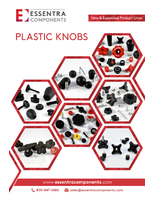Toshiba Develops LBA-NAND(TM) Flash Memory with Logical Block Addressing for Embedded Applications
LBA-NAND(TM) Simplifies Integration of High-Capacity NAND Flash in Embedded Applications
IRVINE, Calif. and TOKYO, Aug. 2 / -- Toshiba America Electronic Components, Inc., (TAEC)* and its parent, Toshiba Corporation, today announced that they have brought logical block addressing (LBA) to NAND Flash memory. Toshiba is launching LBA-NAND(TM), a new line-up of high-capacity devices integrating the new addressing method. LBA-NAND(TM) is designed for use in mobile consumer products, such as digital audio players and personal media players, and will support manufacturers in developing products that can take full advantage of advances in NAND Flash memory capacity while minimizing development costs. Toshiba will start to release samples of the new NAND Flash beginning in August 2006.
NAND Flash memory currently uses the physical address access method that defines each physical page of a memory, from the chip to the block, to the page and down to the cell. Product manufacturers have to develop host side and driver specifications that can recognize and accommodate this physical addressing, and must bear the R&D costs for developing new product specifications and drivers to adopt advances in NAND Flash memory capacity. The logical address access method of LBA assigns each cell a unique address that is not geometry dependent. The first cell is simply 0, and numbering will continue to cover every cell. Memory increases can be accommodated by assigning a new address to each cell. This approach also allows block management, error correction (ECC process) and wear-leveling, all of which are conventionally controlled by the host side, to be handled on the memory side by the LBA-NAND(TM) controller. LBA-NAND(TM) is also fully compliant with the standard NAND Flash interface. As a result, LBA-NAND(TM) supports developers in minimizing development costs and improving time to market for new and upgraded products.
The progress in high resolution, high image and audio quality in digital consumer products has created products and markets that depend on high capacity data storage. In order to meet global market needs, Toshiba will continue to develop innovations such as LBA-NAND(TM) that bring the latest technological advances to the NAND flash memory.
"As NAND advances to smaller process geometries, embedded designs will need to address higher levels of ECC, wear-leveling functions, and other NAND management capabilities," said Brian Kumagai, business development manager, NAND Flash, for TAEC. "LBA-NAND(TM) is a solution that speeds time to market, simplifies design and eliminates the need for the host to handle NAND management functions. Similar to a hard disk drive, LBA-NAND(TM) has built-in error correction and performs automatic bad block management, so all logically addressed blocks look good to the host."
Features
o Adopts logical address access method:
LBA-NAND(TM) controls the processes of block management, ECC process
and wear-leveling, and will contribute to shorter R&D schedules and
lower costs for the development of host controller and driver software.
o While LBA-NAND(TM) is also fully compliant with the standard NAND Flash
interface, it is possible to connect it to the interface of current
NAND flash memory controllers.
o LBA-NAND(TM) supports capacities of over 2 gigabytes(1) (GB),
facilitating development of high capacity storage (35hrs(2) of music
recording for audio data) for digital audio players and personal media
players.
LBA-NAND(TM) Capacity
Logical block address 2GB
NAND type flash memory 4GB
8GB
Specifications
Product Name LBA-NAND(TM)
Description Logical block address NAND Flash memory
Interface Standard NAND type flash memory interface
(using logical block address method)
Power Supply Voltage 2.7 to 3.6V
Availability
Samples of Toshiba LBA-NAND(TM) are scheduled for availability beginning in August 2006.
NAND Flash Background
As a recognized pioneer in flash technology, Toshiba was a principal innovator of NAND- and NOR-type Flash technology in the 1980's. Toshiba maintains leadership in Flash technology today, with a complete line of NAND memory in densities from 512 megabit(3) (Mb) to 16Gb(4) to meet various application requirements. NAND Flash has become one of the leading technologies for solid-state storage applications because of its high-speed programming capability, high-speed erasing, and low cost. The sequential nature (serial access) of NAND-based Flash memory provides notable advantages for these block-oriented data storage applications. Toshiba's NAND Flash memory products are optimized for general solid-state storage, image file storage and audio for applications such as solid-state disk drives, digital cameras, audio appliances, set-top boxes and industrial storage.
*About TAEC
Combining quality and flexibility with design engineering expertise, TAEC brings a breadth of advanced, next-generation technologies to its customers. This broad offering includes memory and flash memory-based storage solutions, a broad range of discrete devices, displays, medical tubes, ASICs, custom SOCs, microprocessors, microcontrollers and wireless components for the computing, wireless, networking, automotive and digital consumer markets.
TAEC is an independent operating company owned by Toshiba America, Inc., a subsidiary of Toshiba Corp. (Toshiba), Japan's largest semiconductor manufacturer and the world's fourth largest semiconductor manufacturer. In more than 130 years of operation, Toshiba has recorded numerous firsts and made many valuable contributions to technology and society. For additional company and product information, please visit TAEC's website at chips.toshiba.com. For technical inquiries, please e-mail Tech.Questions@taec.toshiba.com.
(1) When used herein in relation to memory density, gigabyte and/or GB
means 1,024x1,024x1,024 = 1,073,741,824 bytes. Usable capacity may
be less. For details, please refer to specifications.
(2) With a data transfer rate of 128Kbits per second (kbps). When used
herein in relation to data transfer rate, kbps means 1,000 bits per
second.
(3) When used herein in relation to memory density, megabit and/or Mb
means 1,024x1,024 = 1,048,576 bits. Usable capacity may be less. For
details, please refer to specifications.
(4) When used herein in relation to memory density, gigabit and/or Gb
means 1,024x1,024x1,024 = 1,073,741,824 bits. Usable capacity may be
less. For details, please refer to specifications.
Source: Toshiba America Electronic Components, Inc.
CONTACT:
Rebecca Bueno of Toshiba America Electronic Components, Inc.,
+1-949-623-3099,
rebecca.bueno@taec.toshiba.com
Web site: http://www.chips.toshiba.com/




